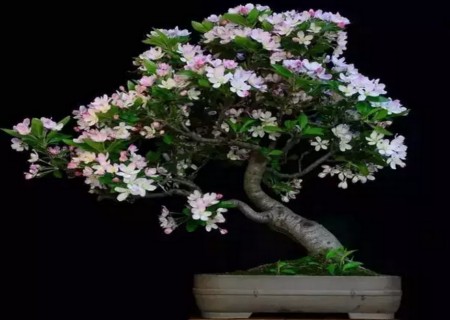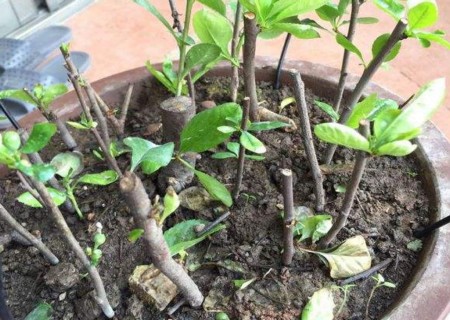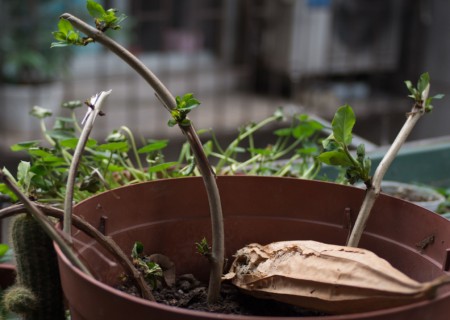How to trim the crabapple bonsai
Song Dynasty Yang Wanli poem: "hanging silk do not get a scenery, who lost all Shu Begonia." The wind stirs the Jade Emperor's red world, and the sun bakes the Green Emperor's purple clothes. Lazy no strength still drunk spring, sleep up the spirit of Xiao makeup. Take a new sentence like this old one, and see how the peach and apricot dare to bear it." The bright red petals of the beautiful crabapple stir the blue sky and heaven red, the purple calyx sparkles like purple robes, the soft drooping red flowers are like young women who have drunk wine, the jade muscles are red, delicate and weak. Its beauty, demon state more than peach, plum, apricot.

The flower color of the crabapple is gorgeous, the flower posture is beautiful, the pedicel is slender and blossoming, and the flower is curved and drooping, so it is named crabapple. Flowers clustered at the top, petals rose red, blossoming curved drooping, such as the breeze fluttering, delicate red. It looks like clouds, beautiful, is people's favorite balcony, courtyard flowers.
Let's see how to trim the crabapple!
1. Early spring pruning
Before germination in early spring, timely pruning of pest branches, dead branches and over-dense branches; renewal of old branches of old plants, the specific method is: sawing off the upper ends of large branches with few branches, and cutting off thin and weak branches after germination of new branches.
2. Flower promotion pruning
Begonia flagelliflora bright color, flowers dense, is a very good species of flowers. In order to make the flowering of Malus flagelliflora dense and prolong the flowering time, you can use the method of pruning in turns:
After intensive pruning in winter, the buds begin to sprout in late April of the next year, and the new shoots can grow to about 20 cm in mid-May. At this time, it is necessary to carry out a pinching treatment on the new shoots, keep the lower 15 cm or so, and promote the top branching to prepare for the flowering of the turns. All unused twigs should be removed.
In the middle of June, the two branches trimmed for the first time have grown to 30-40 cm long, and inflorescences have also grown. One of the two branches has been trimmed, and the inflorescences have been cut off to promote the axillary buds to grow branches as second degree flowering branches.
1) A flower can bloom in early July, cut off the residual flowers after flowering, promote its germination and growth, and germinate a third flower branch.
2) The second degree flower blooms at the beginning of August, and the residual flowers are cut off after flowering to promote the germination of the fourth degree flower.
3) Third-degree flowers bloom in mid-August, and residual flowers must be cut after flowering to ensure sufficient nutrients for fourth-degree flowering.
4) Four-degree flowers begin in late September and can last until November.
In this way, the flowering period of Malus flagelliflora can be extended a lot. In winter, a strong cut is carried out to ensure that flowers bloom next year.
3. Post-flowering pruning
Pruning after flowering, according to tree needs, cut short long branches, promote lateral branches, increase flower bud formation. In addition, pruning can also be carried out during the dormancy period, mainly by cutting off the branches that affect the appearance.
4. Shaping and pruning:
Under the natural growth condition of Malus pendula, the branches are developed, the crown is dispersed, and it is very suitable for being cut into a dispersed layered shape. The plastic belt varies from 80 to 120 cm, 3-4 branches are a layer, layered development, and the main branches gradually decrease from bottom to top.
After seedling grafting survives, culture middle stem first within 1-2 years, when reaching the height of plastic zone, leave stem 1-1.3 meters high, cut off seedling tip, culture new shoots sprouting from cut bud into middle stem extension branch, and select 3-4 new shoots sprouting from axillary bud to culture into first layer skeleton branch in turn.
in that second year, 2-3 secondary main branch are cultured on the extend branches of the middle trunk in the same way as the secondary skeleton branches, and the middle trunk is partially cut off, so that the middle trunk has deviated from the axis, and the inclined middle trunk can be taken as one of the secondary main branches, and a small number of lateral branches on the main branches are selected and reserved.
In the third year, 1 -2 lateral branches are selected and reserved on the secondary main branches as skeleton branches. The main branches are required to have a certain distance between them on the middle trunk, and they are scattered on the middle trunk and cannot overlap each other. Under normal circumstances, do not remove large branches easily when there is no special contradiction between large branches.
After the plant skeleton of Malus flagelliflora is basically formed, the main task is to cultivate the auxiliary branches and their branches to form large flower groups and bloom in large quantities. At the beginning, the number of such branches is small and the space is large, so it is generally not suitable for short cuts, but suitable for long release and natural growth.
In the second year, its apex can be pulled out 2-3 long branches, and the middle part can generally form medium and short branches. With the increase of branches on the secondary lateral branches, proper pruning is needed to promote the germination of the hidden buds at the base, thus preventing the phenomenon of rear baldness.
The specific methods are:
Cut off 1-2 long branches at the tip of the auxiliary lateral branches, and cut short the long branches under the mouth to continue to form long branches and expand the crown.
This branch hind part is too long medium short flower branch, can appropriate truncate tip. General can be allowed to shoot flowers. In the future, according to this method, the long branches at the tip and the middle and short branches at the rear will be treated every year, so that the small lateral branches or larger flower groups will be alternately retracted and renewed every year, and generally can be maintained within a certain range without expanding too fast.
After a few years, when the branch group senescence, can choose from the base or nearby healthy growth branch as newer branch, carry on alternation, gradually retract old branch group.
Time: 2019-06-09 Click:
- Prev

How to propagate Begonia Flowers between husband and wife-cutting methods of Begonia between husband and wife
Begonia reproduction is relatively easy, ordinary cuttings can survive, presumably many flower lovers in the home, there is such a pot of crabapple flowers. Cutting propagation is to make use of the regeneration ability of plant roots, stems, leaves and buds to make it take root and sprout to form new plants under appropriate conditions. Its advantage is to maintain the characteristics of each plant.
- Next

Diagram of cutting method of Flos Lonicerae
Honeysuckle is one of the 38 valuable traditional Chinese medicines under national key management. It has a wide range of uses in medicine, health care, economic ecology and other aspects. The wide use of honeysuckle has brought huge economic benefits. with the successive development of all kinds of honeysuckle products, the market demand has increased exponentially.
Related
- Fuxing push coffee new agricultural production and marketing class: lack of small-scale processing plants
- Jujube rice field leisure farm deep ploughing Yilan for five years to create a space for organic food and play
- Nongyu Farm-A trial of organic papaya for brave women with advanced technology
- Four points for attention in the prevention and control of diseases and insect pests of edible fungi
- How to add nutrient solution to Edible Fungi
- Is there any good way to control edible fungus mites?
- Open Inoculation Technology of Edible Fungi
- Is there any clever way to use fertilizer for edible fungus in winter?
- What agents are used to kill the pathogens of edible fungi in the mushroom shed?
- Rapid drying of Edible Fungi

